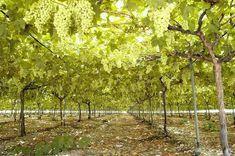
Much like royalty, the fruit trade is renowned for its dynasties and family firms have played a huge role in the sector.
One such business is Lisons Ltd, where John Grieve remembers plenty of tales his father told him about the old days. “My father used to tell me about grapes coming in from Almeria in barrels just after the [Second World] War. All the varieties were seeded in those days. Red peppers, green peppers and avocados just didn’t exist in the UK market, so when they were first brought in, they weren’t popular because they were just too exotic.”
Grieve thinks cheap holidays in the 1960s helped to boost trade in so many products we now take for granted. He says: “Once people started travelling on package holidays to Spain, the trade really evolved as they ate different foods over there. Also the advent of refrigeration really changed things and that brought a big lift in sendings.”
It was not until the 1980s that strawberries were imported from Spain as varieties were introduced from the US. “People could see that the land was good,” says Grieve. “A lot was to do with the varieties and growers realised they could do well with many products if they got the right variety - not just strawberries, but grapes and stonefruit.”
Growers realised that Seville was the California of Europe and peaches, nectarines and grape varieties developed in the US - which has a similar consumer taste profile to the UK - have been planted and continue to be renewed. A lot has also been due to the availability of water and the readiness of the Spanish to divert rivers and build reservoirs all those years ago to ensure crops had irrigation.
Adaptability of Spanish growers has also ensured they have kept their place in the UK market. “The product range is constantly evolving,” Grieve says. “There is the development of seedless watermelon over the past two decades, for example, and now seeded watermelon is making a bit of a comeback as consumers realise the sugar content is good. Another is Nadorcott, which has sold well as a late clementine.”
Germany is Spain’s largest export market since re-unification, but the UK is still a major destination and its own evolving population has helped shape the portfolio and volume of produce arriving during Queen Elizabeth II’s reign. “As our ethnicity as a nation has changed, so has the marketplace,” says Grieve. “Different ethnic groups are used to, and seek out here, products and varieties of products that they are used to and that they know eat well. Apricots, plums and watermelons are all good examples. Spain has been able to meet these demands.”
As for many suppliers to the UK, the opening up of eastern Europe in the past 25 years has presented Spain with a host of new opportunities and Russia particularly is a vast and exciting market, but that does not mean that stalwarts such as the UK will suffer as a result.
Grieve believes that the best salesman for a lot of the produce we enjoy from Spain is the sun. -



